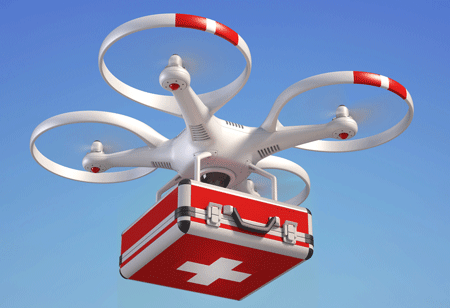THANK YOU FOR SUBSCRIBING
Why are Tethered Drones Vital for the Emergency Response Sector?

By
Apac CIOOutlook | Thursday, July 11, 2019
Stay ahead of the industry with exclusive feature stories on the top companies, expert insights and the latest news delivered straight to your inbox. Subscribe today.
The emergence of tethered drone systems can finally alleviate the crippling challenges faced by the emergency response sector in terms of staff, cost, and infrastructure.
FREMONT, CA: Not many months ago, a fiery blaze razed through an eight-story building in Paris, injuring over 30 people, including the firemen. In such cases, there is only so much the firefighters can do. Often, they have to put their own lives on the line to save as many civilians as possible from the wrath of the calamities.
The need for more efficient emergency response and rescue measures led to the emergence of tethered drones, with multiple providers offering unmanned drone solutions. Nowadays, the tethered drones are not only being deployed for emergency response, but also for securing perimeters.
The Department of Homeland Security (DHS) has recognized the potential of unmanned aircraft system (sUAS) and endorsed its use in bolstering the agency’s mission. The tethered sUAS leveraged by the DHS has a microfilament tether that provides power to the aircraft and transmits video footage to the operator control unit (OCU).
The tethered drones are also being widely utilized in police departments and military units to get a bird’s-eye view of specific locations. The tethered systems offer vast benefits when compared to conventional drones, removing regulatory, battery, and payload restrictions during prolonged missions. Several companies promise over twenty-four hours of flight time with the real-time video feed.
For instance, a developer of tethered drones recently signed an agreement with one of the largest truck manufacturers in the United States to build an add-on system for fire trucks, rescue vehicles, and public safety vehicles. With this feature, the firefighters will be able to deploy the tethered drones from their vehicles and stream live video feed to all the ground units.
Tethered multi-rotor drone systems developed by several other companies have the provision for attaching fire hoses. Many of these rapid response UAVs can climb over a thousand feet within six minutes to extinguish the flames from the air. It will potentially equip emergency response units with a reach almost ten times more than conventional fire ladders.
The emergency response sector has been investing in several other types of drones to overcome its more difficult challenges, including the transportation of blood to remote areas for emergency transfusions. The adoption of drone systems has enabled the emergency response sector to tackle problems such as rising costs, staff shortages, and crippling infrastructure.
Check This Out: Top Drone Technology Solution Companies
Check Out : Review | CIOReview





